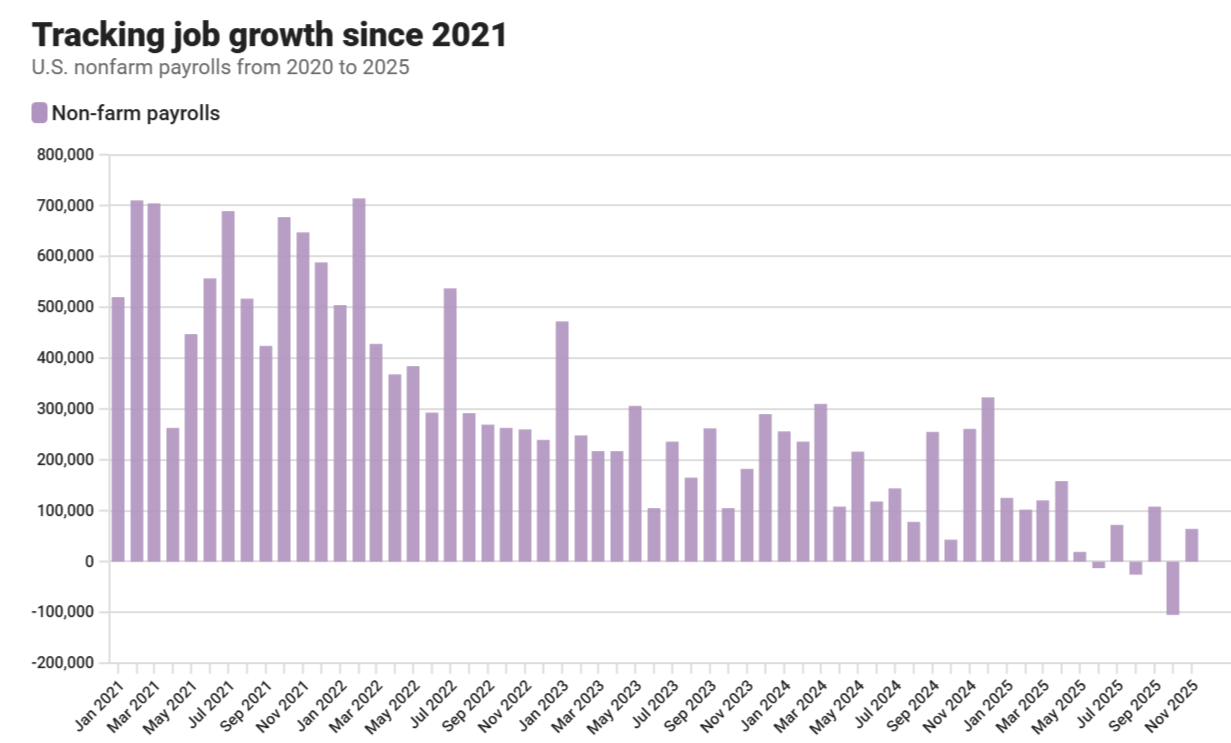Tax Cuts and Jobs Act Becomes Legislation
 On December 22, 2017, the GOP’s Tax Cuts and Jobs Act (TCJA) was signed by President Donald Trump, prior to his departure to Mar-a-Lago for the holidays. The 570 page TCJA bill, which was released as a joint explanatory statement by the United States Congress’ Senate and House of Representatives, is the largest tax overhaul witnessed by the United States for over 30 years. The TCJA’s Senate proposal version, as opposed to that of the House’s proposal, was used as the framework that ultimately led to the completion of a final TCJA that would be in the President’s hands before 2017 year-end.
On December 22, 2017, the GOP’s Tax Cuts and Jobs Act (TCJA) was signed by President Donald Trump, prior to his departure to Mar-a-Lago for the holidays. The 570 page TCJA bill, which was released as a joint explanatory statement by the United States Congress’ Senate and House of Representatives, is the largest tax overhaul witnessed by the United States for over 30 years. The TCJA’s Senate proposal version, as opposed to that of the House’s proposal, was used as the framework that ultimately led to the completion of a final TCJA that would be in the President’s hands before 2017 year-end.
“I was going to wait for a formal signing sometime in early January, but then I watched the news this morning and they were all saying, ‘Will he keep his promise, will he sign it by Christmas?'” Trump said. “And I called downstairs and said get it ready, we have to sign it now.”
The House of Representatives’ TCJA version and its contents were eliminated from the lengthy joint explanatory statement’s respective legislation, as the enactment of a clause which permits the insertion of substitute text into a proposed bill. As the House had withdrawn its argument countering the Senate’s amendments to the House’s version of the TCJA bill, a combination of the proposed legislation from both chambers was discussed, created, issued and approved successfully.
President Trump is now touting his first large-scale and high profile win, during his first year of office, with the Senate and the House, both voting alongside party lines, to deliver a dual-chamber approved TCJA to his desk. Contending that the Act’s passing, despite low approval ratings, the President continues to contend that 2018 employee paychecks will illustrate earning benefits and take home income.
“I don’t think we are going to have to do much selling,” the President said.
16 Key Tax Cuts and Jobs Act Provisions
 The far-reaching TCJA overhaul, expected to have an impact on practically every area of the American economy, was only introduced in early November 2017. Based on that fact, it only took seven weeks for the TCJA to be approved by all relevant parties, start to finish.
The far-reaching TCJA overhaul, expected to have an impact on practically every area of the American economy, was only introduced in early November 2017. Based on that fact, it only took seven weeks for the TCJA to be approved by all relevant parties, start to finish.
Reactions to the TCJA appear to note that the legislation heavily favors businesses and corporations with its tax reductions. However, it must also be noted that the Act maintains and increases benefits for individual filers, especially when put side by side next to the House and Senate’s earlier approved bills. Nonetheless, individual filer provisions are set to expire in 2025, while their sister corporate provisions are not set to expire at all.
Trillions of dollars in tax cuts are incorporated into the TCJA. The issue is that a majority of these tax reductions and tax savings are not counterbalanced by measures that would increase American revenue. As a matter of fact, the nonpartisan Joint Committee on Taxation has expressed that the TCJA stands to increase the American deficit $1.46 trillion over the next decade– an astronomical figure that would only increase more should individual tax cuts not expire in 2025.
INDIVIDUAL TAX FILER CHANGES
- Although the TCJA maintains seven individual tax rate brackets, the percentages in these tax brackets indicate a decrease in individual tax rates. Current individual taxation rates are 10%, 15%, 25%, 28%, 33%, 35% and 39.6%.
The below chart illustrates the TCJA individual rates and their qualifications:
| TCJA Tax Bracket | Individual Income Qualifications | Joint/Married Couple Income Qualifications |
| 10% | Up to $9,525 | Up to $19,050 |
| 12% | Over $9,525 to $38,700 | Over $19,050 to $77,400 |
| 22% | Over $38,700 to $82,500 | Over $77,400 to $165,000 |
| 24% | Over $82,500 to $157,500 | Over $165,000 to $315,000 |
| 32% | Over $157,500 to $200,000 | Over $315,000 to $400,000 |
| 35% | Over $200,000 to $500,000 | Over $400,000 to $600,000 |
| 37% | Over $500,000 | Over $600,000 |
- The practical doubling of the standard deduction for individuals and couples filing jointly is a reality. Single filers will see their standard deduction increase ito $12,000 from its current $6,350. Married filers will see their standard deduction increase to $24,000 from its current $12,700. The idea of the standard deduction increase is to promote and simplify itemized tax deductions
- Personal exemptions are to be eliminated; currently, the individual personal exemption is $4,050 for a single filer, a respective spouse, and respective dependents. The intention with this exemption is to reduce taxable income and tax burdens. This idea is of particular concern for families with three or more children because the elimination of exemptions will probably offset any tax benefits that could possibly be delivered by other TCJA provisions.
- Sweeping changes to the way state and local taxes (SALT) are treated, for taxation purposes, by the federal government, have been added to the Act. In its final form, the TCJA will preserve the SALT deduction for filers who itemize, but the amount that may be deducted will be capped at $10,000. Currently, the dollar amount deduction allowed for SALT is unlimited. Of note is that both the House and Senate Republican bills originally tried to eliminate the SALT deduction entirely, but both chambers were met with stiff opposition.
Tax filers in a majority of the country file for an average SALT deduction below $10,000. This means that for middle- and low-income filers, who currently itemize due to the pre-TCJA treatment of the SALT deduction, it’s likely that these filers will be eligible to take the much higher standard deduction under the TCJA. Also, keeping the SALT break, despite the stipulated $10,000 cap will provide more assistance to higher income households in high-tax states.
- Expanding, by doubling, the child tax credit to $2,000 for minors under 17 is included in the TCJA. Higher income earners could take advantage of this bill as it would heighten the income threshold which filers may claim the full credit to $200,000 for single parents, an increase from $75,000. Also, the first $1,000 of the child tax credit, $400 of the additional $1,000 also will actually be refundable. This translates into a low- or middle-income family being eligible to have money refunded to them even if the family’s federal income tax liability nets out at zero.
Conversely, even with a $400 refund possible, over 10 million children from lower-income families would only garner an additional $75 in benefit under the TCJA
- Introducing a temporary tax credit for non-child dependents would allow guardians to claim a $500 credit for every and each non-child dependent supported by that respective taxpayer. Included in this category would be instances of supporting a child 17 or older, supporting an ailing elderly parent or supporting an adult child with a disability.
- Reducing the existing cap on allowable amounts that can be claimed for the mortgage interest deduction is a hot topic. If you take out a new mortgage on a first or second home you would only be allowed to deduct the interest on debt up to $750,000, as opposed to debt up to $1 million today. Homeowners with existing mortgages would be unaffected by the change, but home equity loan interest costs will no longer be deductible.
- The blow to Americans brought upon by the Alternative Minimum Tax (AMT) has supposedly been lessened. In the early stages of the the AJTC’s development, both the Senate chamber and House chamber strongly advocated the elimination of the AMT. The final TCJA version keeps the AMT, but reduces the number of filers who would be affected by it because the income threshold levels, which would mandate AMT have been raised to $70,300 for singles, an increase from $54,300 today; and to $109,400, an increase from $84,500, for joint filing couples.
- Some popular tax breaks, even in light of their smaller dollar size, have been preserved. Recall that previous versions of the bill had proposed and recommended the repeal of medical expense deductions, student loan interest deduction elimination and even elimination of a deduction for teachers in which educators were effectively given a tax break for supplies purchased with their own money. Also on the chopping board was the repeal of the the tax-free status of tuition waivers for graduate students.
Last minute changes to the final TCJA, however, maintain these aforementioned deductions and tax breaks as they stand under the American current tax code. Actually, the medical expense deduction for 2018 and 2019 has even been expanded.
- The estate tax, or “death tax’, has all but been eliminated for Americans. The portion of taxpayers, even under current tax regulations, really only impacts 0.2% of estates. Nonetheless, the dollar figure exempt from estate taxation currently stands at $5.49 million for individual filers and $10.98 million for joint filers. Both of these amounts are doubled in the TCJA. An interesting caveat to note here is that, in contrast to the House GOP bill, the final TCJA does not call for a repeal of the estate tax in 2025.
- Using “chained CPI” to assess inflation, the TCJA will slow adjustments for inflation in the tax code. “Chained CPI” is a more conservative way to measure and account for inflation than the method used by the current tax code. From a net effect standpoint, exemptions, deductions, and credits will effectively have less worth, as inflation-adjusted numbers typically define eligibility and their maximum value would grow at a slower pace. Additionally, “chained CPI” also would subject more income to higher rates in the future years that would be allowed under the current code.
- A staple characteristic of the Affordable Care Act (ACA), which mandates the purchase of health insurance, has been eliminated, and the TCJA will no longer require a penalty for not buying insurance. Republicans have been attempting to scrap this personal mandate because doing so would assist in offsetting the cost of the GOP’s tax bill, as it is estimated that the ACA mandate significantly increases federal government spends on insurance subsidies and Medicaid. On the flip side, policymakers are wary of the mandate appeal because there is a chance insurance premiums will start to rise.
BUSINESSES AND CORPORATE CHANGES
- The TCJA has slashed the corporate tax rate to 21% from 35%, beginning in 2018. This 21% figure is only somewhat higher than the 20% called for in the early stages of the Act’s development. Legislators, for the most part, introduced the 1% increase to free up revenue needed to accommodate lawmaker demands on other provisions. Additionally, the Act also repeals the corporate AMT.
- Pass-through businesses will have noticeably smaller tax burdens under the TCJA. Including partners and shareholders of S-corporations, LLCs and partnerships — who pay their share of the business’ taxes through their individual tax returns — would be lowered to a 20% deduction, which is only a fraction smaller than less than the 23% recommended in the Senate bill which was originally passed.
Of utmost importance is that fact that the 20% deduction would be strictly prohibited for any individual in a service business unless that taxpayer’s taxable income is less than $315,000 for a joint return and less than $157,500 for an individual filer.
- In tandem with the 20% pass-through tax break come strict guidelines to prevent abuse of the lower pass-through rate. In other words, if the partner or owner in a pass-through entity also earns a salary from the company, money earned in the form of salary will be taxed at ordinary income tax rates. As an additional precaution, efforts to prevent people from recharacterizing their wage income as business profits so to be taxed at the lower 20% tax rate have been put in place.
- Alterations to how American multinational companies are taxed is a large point of contention addressed in the TCJA. Current regulations have U.S. companies owing the IRS on all their profits, regardless of the location where earnings are garnered. Multinationals are allowed to defer paying their U.S. tax obligations on foreign profits until those multinationals bring the money back to the United States.
Equated to a “worldwide” tax system, this arrangement will put American businesses at a disadvantage. This is due to the truism that a majority of foreign competitors originate in countries with territorial tax systems, meaning those foreign businesses will not pay taxes on offshore earnings. Incidentally, the final TCJA introduces the idea that the United States subscribe to a territorial system with myriad provisions preventing multinationals from “gaming the system.” At the same time, the TCJA will require companies to submit a one-time, seemingly low tax rate on their existing overseas profits. The rate for cash assets will be 15.5% and the rate for non-cash assets will be 8.0%.
Conclusion
 In order for your company to be successful, you should consult with an accounting professional. The services of a CPA firm will allow you to rest easy because you will know that your business’ accounting processes are in reliable hands, and in strict compliance with applicable legislation and best practices. Use your valuable time to concentrate on building and bettering your business. Thomas Huckabee, CPA of San Diego, California is a small business accountant expert who can help your company achieve goals and forge forward along the path to success. Please contact our office for further information.
In order for your company to be successful, you should consult with an accounting professional. The services of a CPA firm will allow you to rest easy because you will know that your business’ accounting processes are in reliable hands, and in strict compliance with applicable legislation and best practices. Use your valuable time to concentrate on building and bettering your business. Thomas Huckabee, CPA of San Diego, California is a small business accountant expert who can help your company achieve goals and forge forward along the path to success. Please contact our office for further information.










